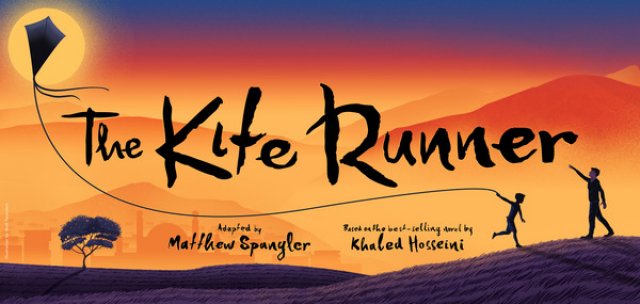The Kite Runner
Broadway Tour of an Insightful Look into Growing Up Privileged in Afghanistan
By: Victor Cordell - Apr 10, 2024
Among life’s most enriching experiences are the lessons learned from observing or participating in other cultures. Opportunities for cross-cultural interaction are almost unlimited in the Bay Area and contribute significantly to our knowledgeable, empathetic, and tolerant population. Among the many immigrant groups inhabiting our region, Afghanis are well represented, their diasporas having been induced by the warring of domestic tribal leaders, the Russian invasion, the American War in Afghanistan, and the draconian Taliban rule.
Having a diplomatic father who received political asylum, Afghan-born novelist Khaled Hosseini has lived in the U.S. from the age of 15, settling in the Bay Area. His heritage has informed his writings, starting with his wildly successful 2003 novel “The Kite Runner,” which was closely adapted for the stage in 2009 by Matthew Spangler and first appeared in this theater.
The narrative is seen through the eyes of Amir, first as a teenager in Kabul starting in 1973 and then as an Afghan-American author in San Francisco from 2001. One conceit in casting is that adult actor Ramzi Khalaf plays Amir at the disparate ages. He uses voice, gesture, and movement to simulate the teen, and though the device is jarring and may be off-putting at first, it soon becomes just another item in the list for suspending disbelief in a theater production.
Semi-autobiographical elements have been acknowledged by Hosseini, beginning with his “survivor’s guilt” for not suffering along with those who were left behind, which is depicted in the storyline. Also like Amir, Hosseini came from the privileged class, emigrated to the U.S., and became an author. Amir is taunted as being a tourist in his own country by his bullying nemesis because of his wealth and status, which Hosseini now doubt heard having lived in Paris and Tehran for several years.
The plot covers several important themes – friendship; parent/child relationships; tribalism and discrimination; and moral failure, courage, and redemption. The central symbol is the kite, and kite fighting was an important sport for teenage boys.
Until the age of 12, Amir was somewhat cloistered, and his best friend was Hassan, unusual because Hassan’s father was servant to Amir’s father. Further, Hassan was illiterate and from the Hazara tribe, which is Shiite rather than the dominant Sunni practiced by Pashtuns. Hazaras suffered great discrimination and even genocide from Pashtuns in earlier times and later from the Taliban when they took command of the government.
Children are taught bigotry, and even though the boys had an unequal relationship, it was not tribal or religious, but rather patrician versus peon. But in one area, Hassan held sway. He was a skilled kite runner. Kite competitors were allowed an assistant, and Hassan had a sense for anticipating movement and a nose for the tactics to bring other kites down.
Amir’s mother died in birthing him, and his father, Baba, played by an irascible and overbearing Haythem Noor, saw nothing but failure in his son despite the boy’s literary accomplishments. But winning a kite competition should placate Baba, and with Hassan on his side, Amir can compete for victory.
Despite Hassan’s loyalty and courage, after the two suffer from bullies, Amir betrays Hassan. This abandonment will change the lives of both, and the consequences will haunt Amir.
Before the action intensifies, the author and playwright do a fine job of establishing the characters’ characters and defining the socio-politico-religious context. Following the turning point are riveting instances of betrayal, sacrifice, flight to freedom, abandonment, obstacles, harassment, threats, deaths, courageous risk taking, and some heartwarming events.
Though the play reveals numerous culture-specific issues, the universality of human challenges comes through. The drama strikes a nice balance between the macro events of the periods involved and those of individuals whose consequences will not tip a societal scale.
The production is professional with fine acting and sharp scenic design employing low lighting configurations throughout. One distraction is that several performers play multiple parts, and their different looks aren’t always sufficiently differentiated. The gender balance is poor with only one female having significant stage time and impact. In defense of the author, his follow up novel “A Thousand Splendid Suns” focuses on similar issues from the female perspective.
“The Kite Runner” is written by Matthew Spangler from the novel by Khaled Hosseini, with the Broadway touring production produced locally by San Jose State University’s Hammer Theatre and En Acte Arts, and plays at the Hammer, 101 Paseo de San Antonio, San Jose, CA through April 7, 2024.

